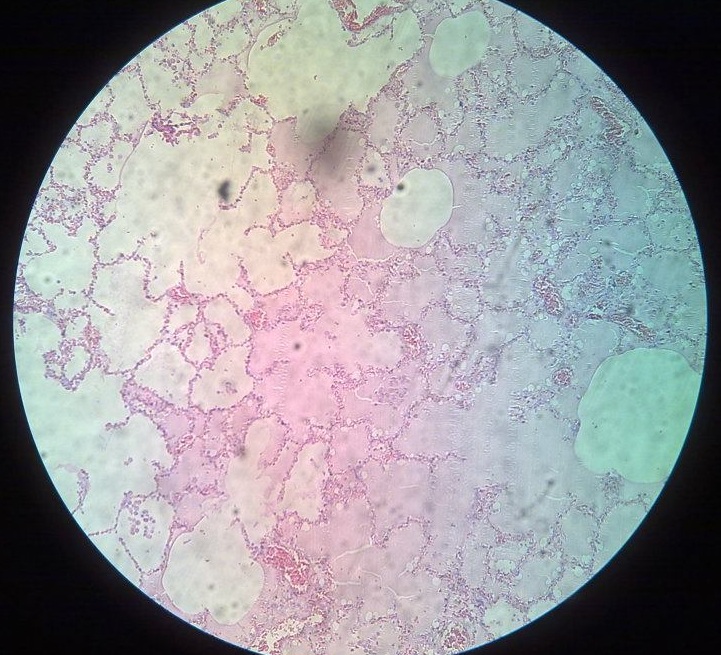Edema is accumulation of fluid in interstitial spaces and serous cavities. It can be either exudate or transudate.
Transudate
It is a protein poor fluid usually seen in hemodynamic derangement. Specific gravity is less than 1.012.
Exudate
It is a protein rich fluid usually seen in cases where there is increase in vascular permeability. Specific gravity is more than 1.102. Basic mechanism involved in development of edema is exudation due to increased hydrostatic pressure and decreased plasma colloid osmotic pressure.
Important causes of lung edema are:
- Infections
- Toxins
- Chemical exposure to irritants
- Burns
- Other less important causes of pulmonary edema are:
- Lymphatic obstruction due to parasitic infiltration
- Radiation
Pulmonary edema can be due to obstruction of pulmonary artery because of embolus.

Morphology
Gross
Lungs are heavy and wet.
Microscopic
Pale staining eosinophilic appearance around perivascular interstitial spaces leading to widening of alveolar septa. There will be progressive accumulation of plasma fluid in alveolar spaces along with extravasated RBCs and WBCs in interstitium as well as in alveolar spaces.
Heart failure cells are seen in alveolar septa and alveolar spaces. These cells are formed when extravasated RBCs are broken down and release hemoglobin, which is ingested by alveolar macrophages. Hemoglobin inside macrophages is converted into fine granules of hemosiderin, which are of golden brown color.
Want a clearer concept, also see all images on Pulmonary Edema
 howMed Know Yourself
howMed Know Yourself




